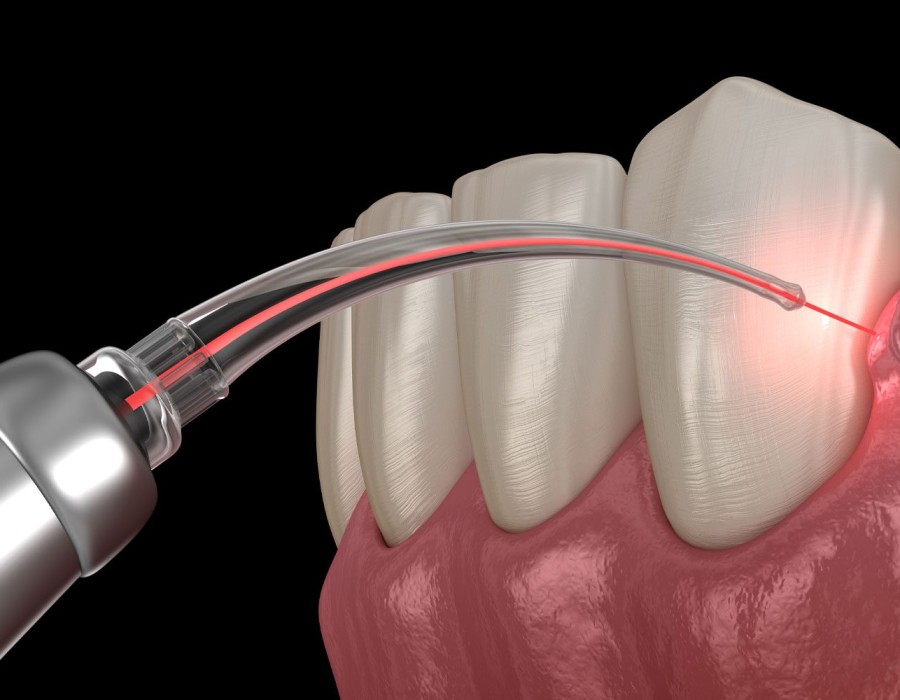Many patients wonder how does gingivectomy improve gum health and appearance, especially when facing persistent gum issues or cosmetic concerns. A gingivectomy is a dental surgical procedure that removes and reshapes excess or infected gum tissue. It is often performed to manage gum disease or enhance the aesthetics of the smile. By addressing both health and cosmetic aspects, Gingivectomy (Gum Tissue Removal) offers significant improvements for patients looking to maintain strong, healthy gums and a confident appearance.
Enhancing Gum Health Through Gingivectomy:
One of the primary goals of gingivectomy is to create a healthier gum environment by removing diseased tissue and reducing gum pockets that harbor bacteria.
- Reduces bacterial buildup: Deep pockets between the teeth and gums are ideal spots for bacteria to thrive. Gingivectomy eliminates these pockets, reducing the risk of infection.
- Improves access for cleaning: After the excess tissue is removed, both dental professionals and patients can clean more effectively, minimizing plaque and tartar accumulation.
- Prevents progression of gum disease: By addressing the early to moderate stages of periodontal disease, gingivectomy can stop further damage before it leads to bone or tooth loss.
- Minimizes inflammation: Removing infected gum tissue leads to decreased swelling, redness, and tenderness in the affected areas.
These health improvements make it easier to maintain long-term oral hygiene and reduce the need for more extensive procedures down the road.
Reshaping Gums for a Better Smile:
Gingivectomy doesn’t just heal—it also enhances. For many patients, uneven or bulky gum tissue can affect self-confidence, even if their teeth are healthy and well-aligned.
- Creates a more even gumline: Uneven gums can make teeth appear crooked or small. Gingivectomy sculpts the gums to better frame the teeth.
- Reduces a gummy smile: If too much gum tissue shows when you smile, removing the excess helps create a more balanced, tooth-focused appearance.
- Improves tooth proportions: Lengthening the visible surface of the teeth through gum contouring leads to a more aesthetically pleasing result.
- Supports other cosmetic treatments: Patients often undergo gingivectomy before veneers or crowns to achieve better symmetry and adhesion.
This cosmetic benefit makes gingivectomy a popular option not only among those with gum disease, but also with individuals seeking a more confident smile.
What to Expect During the Procedure?
Understanding the process helps eliminate fear and encourages patients to commit to necessary treatment. A gingivectomy is typically quick, safe, and performed under local anesthesia.
- Initial assessment: Dentists examine the depth of gum pockets and overall gum condition, often using X-rays for accuracy.
- Anesthesia application: Local anesthetic is administered to numb the area and ensure patient comfort.
- Gum reshaping: The dentist or periodontist uses a laser or scalpel to carefully remove the excess or diseased tissue.
- Wound protection: A periodontal dressing may be placed to protect the surgical site and promote healing.
- Procedure time: The entire process generally takes 30 minutes to an hour, depending on the treatment area.
Thanks to modern techniques and tools, recovery is typically smooth, with minimal discomfort and downtime.
Recovery and Post-Procedure Care:
Proper care after gingivectomy is essential to support healing and preserve results. Most patients return to normal routines quickly, especially with good post-operative habits.
- Manage mild discomfort: Over-the-counter pain relievers can ease tenderness and swelling in the first few days.
- Stick to a soft diet: Foods like yogurt, smoothies, soup, and eggs are ideal during early healing.
- Gentle oral hygiene: Patients are advised to brush gently and use prescribed mouth rinses to prevent infection.
- Attend follow-up visits: Regular check-ins allow the dentist to monitor healing and remove any dressings if used.
Healing typically completes in one to two weeks, with visible improvements in both health and appearance becoming more noticeable as the gums settle.
Long-Term Results and Maintenance:
To enjoy the full benefits of a Gum Tissue Removal, patients must maintain a consistent oral care routine and stay proactive about dental health.
- Brush and floss daily: Removing plaque regularly prevents future gum issues and supports healing tissue.
- Use an antimicrobial mouthwash: This helps reduce bacteria that could cause inflammation or infection post-surgery.
- Avoid tobacco use: Smoking or chewing tobacco slows healing and increases the risk of complications.
- Visit the dentist regularly: Routine cleanings and exams help identify potential issues early and keep your gums healthy.
With proper maintenance, the results of a gingivectomy can last for years, improving both the functionality and appearance of your smile.





Comments